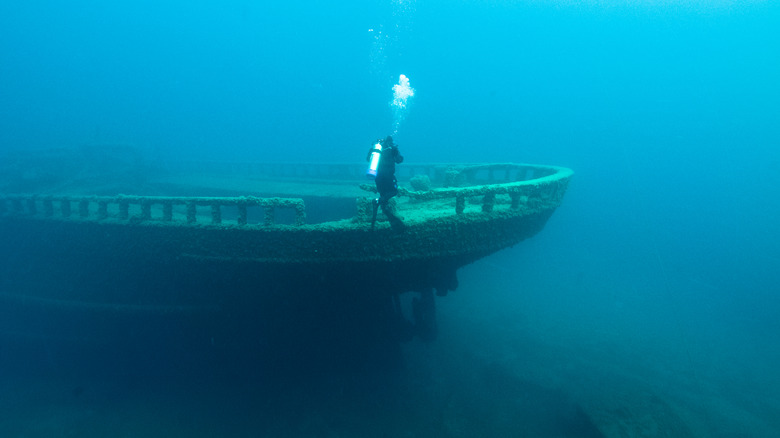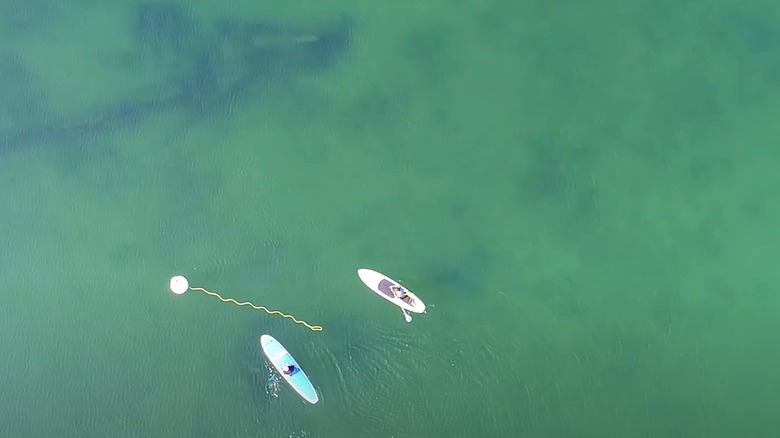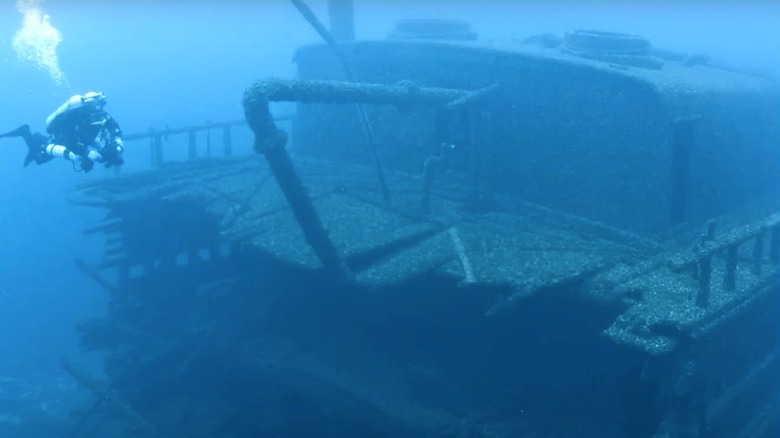Michigan's Unique 'Shipwreck Alley' Offers A Historic Underwater Sanctuary Prime For Exploring
Shipwrecks have always drawn people, and for a number of reasons. Aside from the fact that many of us are fascinated by disasters (there is a good reason the movie "Titanic" is such a hit), they're like a slice of life, frozen in time. That's particularly true in Michigan's Lake Huron, whose freshwater and cold conditions make it ideal for preserving ships. While oceans may pop into your mind first as the place where shipwrecks happen, there are so many in Lake Huron that part of it is protected by the National Oceanic and Atmospheric Administration (NOAA) as the Thunder Bay National Marine Sanctuary. There are almost 100 wrecks inside the sanctuary, with more being discovered, and you can actually go visit them as a member of the public. Nicknamed "shipwreck alley," this sanctuary can be explored in a number of different ways, even if you aren't certified in scuba.
The wrecks in this sanctuary, which covers 4,300 square miles, are from over 200 years of lake travel, and there are all sorts of ships, from giant barges and steamers to small wooden schooners. It runs from the Presque Island county line to the southern Alcona county line, but if you want a great place to start, it's Alpena, Michigan.
Checking out the wrecks in Shipwreck Alley if you don't scuba dive
Visiting Alpena, Michigan may require a rental car, as the largest nearby transportation hub is Bishop International Airport, at around 188 miles away. However, it's worth the drive. Right in downtown is the Great Lakes Maritime Heritage Center. For those who don't scuba, you can purchase tickets for a glass-bottom boat tour right there at the Visitor Center, which is open daily all year, but the hours are seasonal. With a glass-bottom boat, you can get a glimpse of some of the more shallow wrecks without even getting your feet wet. It's around $40 for adults, with lower prices for kids. There are lots of exhibits to see at the Heritage Center before you go, to put everything you'll see in the lake into context. You can do things like walk through a life-size schooner deck, and it's great if you're bringing kids. It's also free to visit the Heritage Center, which makes it extra special.
The really great part of the Marine Sanctuary is that you can also snorkel several wrecks that are close to the surface. There are seven of them in shallow water, and four of those are right by Alpena, including the Shamrock (wrecked in 1905), the John F. Warner (1890), which is only nine feet down, the Harvey Bissell (1905), and the Bay City (1902). You can see them on a map right here. That means you can see them below you through your mask, as well as paddle over them in a boat or a stand-up paddleboard. (Snorkeling has its own dangers, of course, so make sure you're familiar with how it all works before you go.)
Diving the Thunder Bay National Marine Sanctuary
If you're a scuba diver, the Thunder Bay National Marine Sanctuary is an absolute treasure trove of wrecks to visit. It's not hard to find the wrecks, either. In fact, there are seasonal mooring buoys at many of the more popular ones, so you don't have to drop an anchor to dive, which could damage them. There is a yellow tag line attached to the buoys to secure boats. They're out there from around May 15 through October 1. Before you visit and dive these spectacular wrecks, however, you have to remember that the area is protected by state and federal laws. It's illegal to remove anything or damage the ships in any way. It's wonderful that these pieces of history are open to the public, and respecting them is vital.
If you haven't been scuba diving before, you can check out Great Lakes Divers in Alpena. They can teach and certify you, whether you're a beginner or looking for a specialty certification. They also have a refresher course, one on local diving, and an equipment shop for whatever you need. If you're an advanced diver, you should check out the Montana, which sits at the mouth of the bay, over 60 feet down. This wooden steam barge was launched in 1872 from Port Huron and wrecked in 1914. There is a large steam engine that is still standing upright under the water, and it's spectacular. (The whole crew escaped before it sank.) Finally, if you're taking a flight to visit this incredible place, keep in mind that after scuba diving, it's recommended that you avoid flying for 24 hours afterward.


